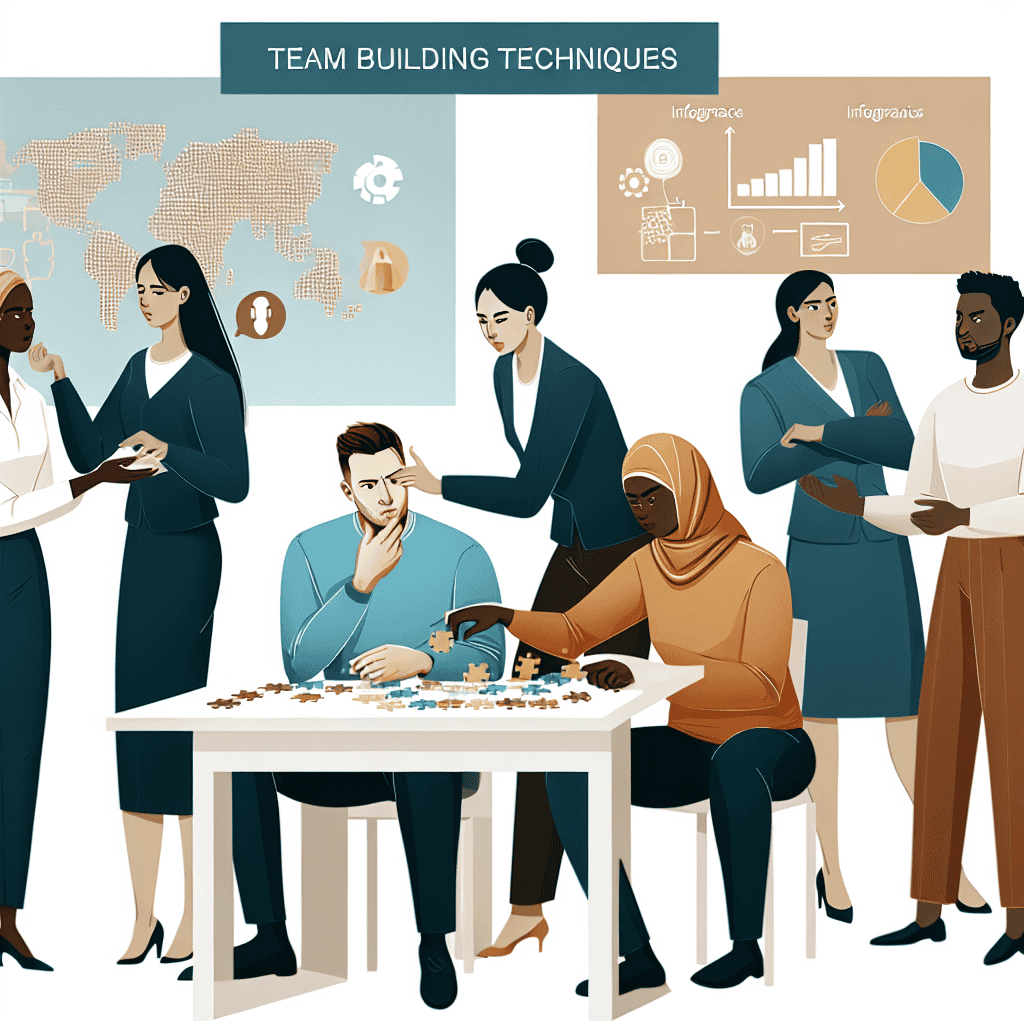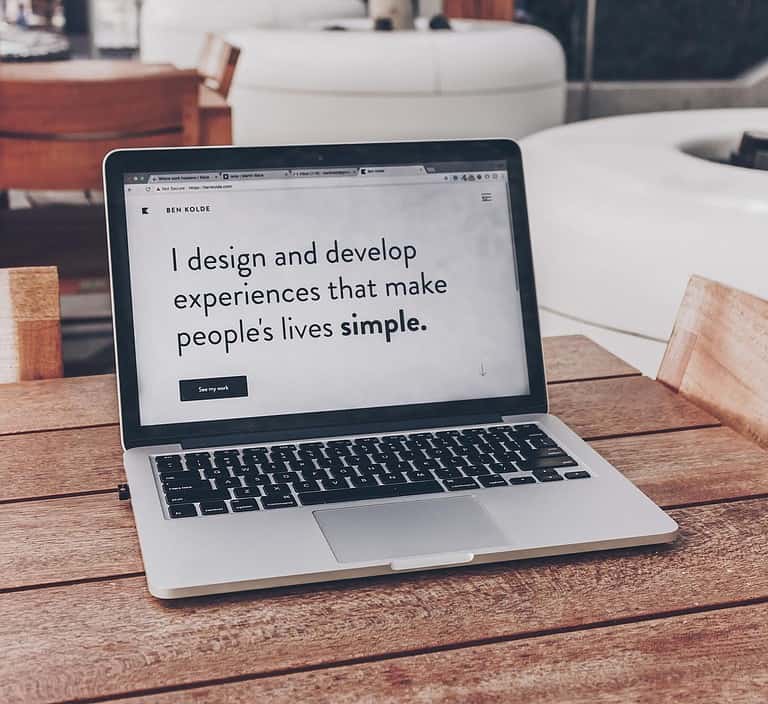20 Innovative Team-Building Techniques to Boost Cohesion
Did you know that companies with strong team-building practices see a 26% increase in employee productivity?
In today’s fast-paced business world, effective team building is no longer a luxury—it’s a necessity. As a business leader or small business owner, you constantly look for ways to improve how your team members work together and create a more cohesive work environment.
Imagine a workplace where your team members are excited to collaborate, creativity flows freely, and productivity soars. With the right team-building techniques, this can be your reality! In this comprehensive guide, we’ll explore innovative team-building techniques that are set to revolutionize workplaces.
Whether you manage in-person teams or lead remote teams and workers, these strategies will help you build stronger, more effective teams that drive your business forward.
Understanding the Importance of Team Building
In the fast-paced world of small businesses, efficient communication and collaboration are essential for success. But what exactly are they, and why should small business owners consider adopting them?
The Impact of Effective Team Building on Organizational Success
When you invest in a team-building process, you’re not just boosting morale (although that’s certainly a welcome side effect!). You’re laying the groundwork for a more productive, innovative, and, ultimately, successful organization.
Think about it: when team members feel connected and supported, they’re more likely to:
- Go the Extra Mile: They’ll take the initiative, tackle challenges head-on, and strive for excellence.
- Collaborate Effectively: They’ll share ideas freely, offer constructive feedback, and work together to achieve common goals.
- Contribute Their Best Ideas: They’ll feel comfortable speaking up, even if it means challenging the status quo, leading to breakthroughs and innovations.
In short, effective team building creates a ripple effect that touches every aspect of your business. It’s an investment that pays off in dividends, both in the short and long term.
Key Benefits of Team Building Exercises
Team building exercises are pivotal in fostering strong bonds and developing vital skills among your team members. These exercises range from simple icebreakers to complex challenges demanding collaboration and problem-solving skills.
Regardless of the activity, the ultimate goal is to create opportunities for your team to connect, build trust, and learn to work cohesively.
Let’s delve deeper into some of these key benefits:
1. Improved Communication
Open and transparent communication is the cornerstone of any successful team. Fun team-building activities create a safe space for individuals to express their ideas, listen actively, and provide constructive feedback.
2. Enhanced Collaboration
Many team-building exercises are designed to encourage collaboration and teamwork. By working together to overcome challenges, your team members will learn to leverage their strengths and support each other’s weaknesses.
3. Increased Morale and Motivation
When individuals feel connected to their team and the organization’s goals, their morale and motivation naturally soar. Team building activities can inject fun and excitement into the workplace, fostering a positive atmosphere that inspires everyone to give their best.
. Stronger Problem-Solving Skills
Team building exercises often present challenges that require creative problem-solving. As your team navigates these obstacles, they’ll hone their critical thinking abilities and learn to approach problems from different perspectives.
5. Greater Trust and Respect
Trust and respect are essential for any successful team. Team building activities offer opportunities for individuals to get to know each other on a deeper level, fostering a sense of camaraderie and mutual respect.
Common Challenges in Team Building and How to Overcome Them
Even with the best intentions, team building can be challenging. While it’s natural for challenges to arise, recognizing and addressing them proactively is vital to fostering a truly cohesive team.
Let’s explore some common hurdles you might encounter:
Communication Barriers
Misunderstandings, lack of clarity, or even personality clashes can hinder effective communication. To overcome this, encourage open dialogue, active listening, and provide opportunities for team members to express themselves freely.
Lack of Trust
Trust is the foundation of any successful team. Lacking trust can lead to hesitancy, conflict, and a breakdown in collaboration. To build trust, foster an environment of transparency, encourage vulnerability, and lead by example.
Personality Clashes
Individuals with different personalities will inevitably have occasional disagreements. Instead of trying to eliminate these differences, leverage them! Encourage team members to appreciate and respect each other’s unique perspectives, fostering an environment of inclusivity.
Lack of Engagement
Some team members may need to be more reserved or more open to participate in team-building activities. To overcome this, create a safe and inclusive environment, offer a variety of activities that cater to different personalities, and make participation voluntary but encouraged.
Competing Priorities
In today’s fast-paced work environment, finding time for team building can be challenging. To overcome this, schedule dedicated time for team building activities, make them a regular part of your company culture, and emphasize their importance to overall productivity and success.
Remember, the key to successful team building is to be adaptable, patient, and committed to creating a positive and inclusive environment where everyone feels valued and heard.
What are Essential Team Building Techniques?
Making a strong and collaborative group includes more than just proficient tasks—it requires a mix of fun and compelling team-building techniques. This article investigates engaging techniques that serve as adventure sports for team dynamics.
These strategies guarantee to reinforce bonds and to imbue a sense of energy and solidarity inside your group. Join us on this journey of exploration as we reveal creative ways to cultivate camaraderie and improve collaboration through the excitement of adventure sports-inspired group building.
1. Two Truths and a Lie
Effective communication is pivotal for cultivating solid cooperation inside any organization. Different workouts can be realized to upgrade communication aptitudes and advance collaboration among group individuals.
One such exercise is the “Two Truths and a Lie” amusement, in which each group offers two genuine and one untrue articulations about themselves. In contrast, others attempt to recognize the lie. This exercise empowers dynamic tuning in and mindfulness to detail while making a fun and engaging environment.
2. Communication Circle
Another effective team building exercise is the “Communication Circle,” where team leaders and team members form a circle and take turns sharing their thoughts on a specific topic or work-related challenge.
This exercise enhances communication flow by ensuring everyone has a chance to speak and actively encourages open dialogue and the free exchange of ideas.
The Communication Circle fosters trust and mutual respect among team members by creating a safe space for individuals to express themselves. This, in turn, can lead to better collaboration and problem-solving in the workplace.
3. Blindfolded Obstacle Course
Trust-building exercises play a crucial part in advancing solidarity among group individuals. One successful movement is the “Blindfolded Obstacle Course,” where group individuals are combined up, and one individual is blindfolded.
In contrast, the other guides them through an obstacle course utilizing only verbal enlightening. This movement cultivates trust and dependence on others, as group individuals must depend on their partners’ direction to explore effectively.
4. Team Building Challenge
Another movement that advances trust and solidarity is the “Team Building Challenge,” where groups are given a complex errand or issue to fathom together. This action empowers collaboration, problem-solving, and sharing thoughts, all of which contribute to building trust and solidarity inside the group.
When you face and overcome challenges collectively, group members learn to rely on each other’s strengths and develop a more profound sense of camaraderie. The experience also helps identify and leverage diverse perspectives, leading to more innovative solutions and a stronger, more cohesive team environment.
5. Escape Room
These challenges fortify critical thinking and inventiveness and cultivate collaboration and cooperation, essential skills for any high-performing team. One successful challenge is the “Escape Room” activity, where groups are locked in a room and must work together to unravel puzzles and discover clues to escape within a given time limit.
This activity demands effective communication, delegation of tasks, and the ability to think outside the box, pushing individuals to step out of their comfort zones and contribute their unique skills to the team’s success.
The shared sense of urgency and excitement creates a memorable bonding experience, fostering camaraderie and a sense of accomplishment that can last long after the team building games.
6. Decision-Making Simulation
Another challenge is the “Decision-Making Simulation,” where groups are displayed with complex scenarios and must collectively make choices based on restricted data. This challenge advances viable problem-solving, consensus-building, and the capacity to handle weight as a group.
This pushes team members to quickly adapt to new roles and trust each other’s decision-making skills under pressure. The intensity of the challenge accelerates interpersonal relationships and can reveal hidden potential within the team, making it a powerful tool for team development.
7. Considering Workshop
Collaborative ventures give a fabulous opportunity to cultivate imagination inside groups. By engaging group individuals in ventures that require conceptualizing, thought-era, and collective decision-making, organizations can tap into the assorted ability sets and viewpoints displayed inside their groups.
One viable collaborative project may be a considering workshop, where groups work together to distinguish and unravel complex issues through a human-centered approach. This energizes imaginative thinking and reinforces the bonds between group individuals as they collaborate and emphasize thoughts.
8. Craftsmanship Venture
Another collaborative venture could be a craftsmanship venture, where group individuals can express their imagination through painting, sculpting, or photography. This not only permits people to tap into their imaginative capacities but also energizes collaboration and rouses new points of view.
Participating in such an artistic endeavor helps break down formal workplace barriers and promotes informal colleague interactions. It provides a relaxing environment where team members can openly share ideas and appreciate each other’s unique artistic expressions, fostering a more inclusive and supportive workplace culture.
9. Human Knot
The Human Knot is a fun, physical exercise that requires close collaboration and problem-solving. Team members stand in a circle, extend their hands, and grab someone else’s hand randomly. Without letting go, the group must untangle themselves into a circle. This activity promotes communication, cooperation, and teamwork under pressure.
The activity also serves as a metaphor for how interconnected and dependent on each other everyone in the organization truly is, reinforcing the idea that success often requires collective effort and adaptability.
10. The Marshmallow Challenge
In this creative task, teams are given a set of materials (spaghetti sticks, tape, string, and a marshmallow) and must build the tallest free-standing structure to hold a marshmallow on top. This challenge encourages innovation, strategic thinking, and collaboration as teams learn to brainstorm and iterate under time constraints.
The seemingly simple materials force participants to think creatively and resourcefully, while the competitive element adds a layer of excitement and motivation.
11. Scavenger Hunt
A team-based scavenger hunt, either in the office or outdoors, encourages groups to work together to solve clues, find objects, or complete tasks. This playful activity not only builds trust and encourages communication but also fosters a sense of accomplishment and shared victory as teams race to complete their lists.
The scavenger hunt format also injects an element of fun and friendly competition into the team-building experience, breaking down barriers and allowing individuals to connect in a relaxed and enjoyable setting.
Furthermore, the need to strategize, delegate tasks, and problem-solve together enhances teamwork and promotes adaptability, skills that are invaluable in any workplace environment.
12. Role-Switching Simulation
In this exercise, team members switch roles for a day or specific task to experience what others do. This promotes empathy, a better understanding of team dynamics, and an appreciation for different organizational roles. It also fosters adaptability and improves cross-department collaboration, as individuals gain firsthand insights into the challenges and responsibilities faced by their colleagues.
By stepping into someone else’s shoes, participants develop a broader perspective and a deeper appreciation for the diverse skills and contributions that make the team successful.
13. Group Storytelling
Teams are tasked with creating a story together, each person contributing one sentence or paragraph at a time. This fun, creative exercise develops listening skills, encourages spontaneity, and demonstrates the importance of building on each other’s ideas to achieve a shared goal.
As the story unfolds, participants learn to adapt their contributions to the evolving narrative, fostering flexibility and collaboration. This exercise also highlights the power of collective creativity, showcasing how a group can produce something unique and engaging when they work together harmoniously.
14. Office Trivia
Create a trivia game with questions related to the office, industry, or fun facts about team members. This can break the ice, improve team bonding, and help employees get to know one another better in a relaxed environment. It’s also an excellent way to build a fun company culture.
Trivia can spark friendly competition and encourage collaboration as teams work together to answer questions. Plus, it can highlight interesting facts about your company and industry, promoting learning and engagement.
You can even personalize the trivia game by including questions about team members’ hobbies, interests, or quirky talents, creating a sense of camaraderie and shared fun.
15. Personality Assessments
Using personality assessments like Myers-Briggs or DISC within a team helps members understand each other’s strengths, weaknesses, and communication styles. This promotes better collaboration and understanding while highlighting ways to improve team dynamics by leveraging individual personalities effectively.
By gaining insights into their own and colleagues’ personalities, team members can appreciate diverse perspectives, recognize potential conflict areas, and develop strategies to work together more harmoniously.
This knowledge can also empower managers to tailor their leadership styles and communication approaches better suit the needs of their team members, fostering a more productive and supportive work environment.
16. Tower Building
Similar to the Marshmallow Challenge, this involves teams working together to build the tallest tower out of limited resources like paper, cups, or straws. It’s a fun, low-stress way to encourage creativity, planning, and teamwork under time constraints.
As teams experiment with different designs and grapple with resource limitations, they develop problem-solving skills and learn to adapt on the fly.
This activity highlights the importance of communication and collaboration, as success depends on each team member contributing their ideas and working cohesively towards a common goal.
17. Flash Feedback
In a structured manner, team members give each other short, constructive feedback on specific work-related actions or behaviors. This activity promotes open communication, helps identify areas for improvement, and creates a culture of continuous feedback where individuals feel comfortable sharing their observations and suggestions.
Focusing on specific actions and behaviors, the feedback remains objective and actionable, enabling team members to learn and grow from each other’s insights. This fosters a supportive environment where individuals feel empowered to develop their skills and contribute to the team’s success.
18. Outdoor Adventure Challenge
Teams participate in outdoor activities like rock climbing, hiking, or rafting. These physically demanding challenges force members to rely on one another, fostering trust and team unity. They also serve as a refreshing break from the office environment, boosting morale.
Overcoming challenges in the great outdoors can create lasting memories and strengthen bonds within the team, translating into improved collaboration and communication back in the workplace. These activities also promote a sense of adventure and shared accomplishment, leaving a lasting positive impact on team dynamics.
19. Cook-Off Challenge
A fun and collaborative culinary activity where teams compete to create the best dish with a set of ingredients. This challenge encourages creativity, communication, and time management, with the added benefit of sharing the final creations as a team.
The playful atmosphere and the opportunity to showcase culinary skills (or lack thereof!) can foster camaraderie and lighthearted competition, breaking down barriers and promoting a sense of shared accomplishment. This activity also appeals to diverse interests and can accommodate various skill levels, ensuring that everyone feels included and can contribute to the team’s success.
20. Puzzle Solving Relay
Teams are broken into smaller groups, each responsible for solving part of a larger puzzle (e.g., jigsaw, word puzzle, or brainteaser). Once they complete their segment, they pass it on to the next group. This exercise promotes teamwork, efficiency, and shared problem-solving.
As each group works on their piece of the puzzle, they must also communicate and collaborate with other groups to ensure their efforts fit seamlessly into the overall picture. This highlights the interdependence of different organizational roles and departments and the importance of clear communication and coordination for achieving collective success.
How Do You Measure the Success of Team Building Techniques?
Measuring the success of team-building activities is crucial for understanding their impact and ensuring they align with your organizational goals.
While the benefits of team building may seem intangible at times, there are concrete metrics you can track to gauge their effectiveness.
By establishing clear objectives and utilizing appropriate tools, you can gain valuable insights into how team building contributes to your overall success.
Key Performance Indicators for Team Building
Establishing clear, measurable objectives is essential before implementing any team-building activity. What specific outcomes are you hoping to achieve? Are you looking to improve communication, boost morale, or enhance collaboration? By defining these goals upfront, you can select the most appropriate activities and track their impact more effectively.
Once you’ve defined your objectives, you must choose the right tools and every team building method to track progress. This might involve conducting surveys or assessments before and after team building activities, observing team dynamics during and after the exercises, or even tracking key performance indicators related to productivity and collaboration.
The key is to choose metrics that align with your objectives and provide meaningful insights into the impact of your team-building efforts.
While team building is valuable in its own right, it’s also important to demonstrate its impact on your overall business goals.
By linking team-building metrics to key performance indicators such as productivity, employee satisfaction, or customer satisfaction, you can showcase the tangible benefits of your investment in team-building.
This will help justify continued investment in these activities and demonstrate their contribution to your organization’s success.
Gathering and Analyzing Feedback on Team Building Activities
To gather valuable insights into the effectiveness of your team-building activities, it’s essential to design feedback surveys that elicit meaningful responses. Focus on open-ended questions that encourage participants to share their thoughts and feelings about the activity. Include questions addressing your objectives, such as “Did this activity improve your communication skills?” or “Do you feel more connected to your team after participating in this exercise?”
In addition to surveys, consider conducting post-activity debriefs or reflections. This allows team members to discuss their experiences, share insights, and identify areas for improvement. A manager or team leader can facilitate these discussions or be more informal, allowing team members to express their thoughts and feelings openly.
The feedback you gather is invaluable for continuously improving your team-building efforts. Analyze survey results and debrief notes to identify strengths and weaknesses in your activities.
Use this information to refine existing activities or develop new ones that address your team’s needs better. By actively seeking and incorporating feedback, you can ensure that your team-building efforts remain relevant, engaging, and effective.
Long-term Impact Assessment of Team Building Techniques
To truly understand the long-term impact of your team-building efforts, it’s important to track changes in team dynamics over an extended period. This might involve repeating surveys or assessments regularly, observing team interactions in various settings, or even tracking key performance indicators related to collaboration and productivity over time.
Monitoring these changes means you can gain valuable insights into how team building contributes to sustained improvement in your team’s performance.
Ultimately, the true measure of success for any team-building initiative is its impact on your organization’s bottom line. By correlating team-building metrics with key business performance indicators, you can demonstrate the tangible benefits of your investment. This might involve tracking changes in productivity, employee retention, customer satisfaction, or even revenue growth after implementing team-building activities.
Learning from the experiences of others can be a powerful way to improve your team-building efforts. Research case studies of organizations that have successfully implemented long-term team-building strategies.
Analyze their approaches, the challenges they faced, and the outcomes they achieved. By understanding what has worked for others, you can gain valuable insights and inspiration for your team-building initiatives.
Final Thoughts on Team-Building Activities
As this guide has explored, the right team-building techniques can transform your workplace, boost productivity, and create a thriving company culture.
From virtual reality experiences to mindfulness practices, the possibilities for innovative team-building events are endless. An effective team-building event helps team members understand each other. Remember, it is an ongoing process, not a one-time stint.
By consistently implementing these techniques and adapting them to your team’s unique needs, you’ll foster a work environment where collaboration flourishes and success becomes inevitable. As a business leader or small business owner, you can shape your team’s future.
Start implementing these team-building techniques today, and watch your team’s performance, creativity, and job satisfaction soar.
Ready to take your team to the next level? Choose one technique from this guide and commit to implementing it this week.







